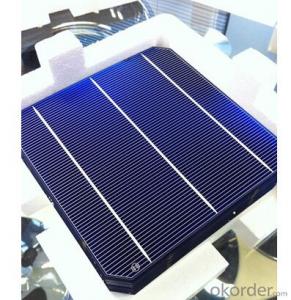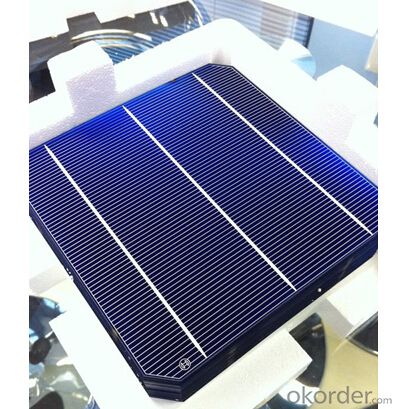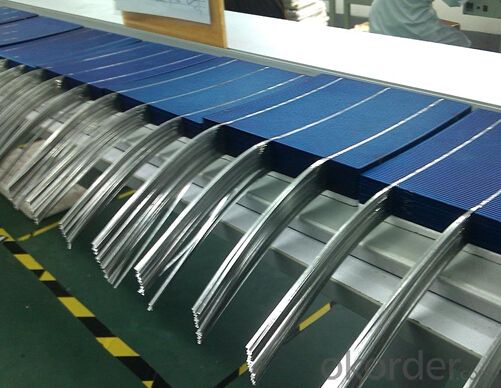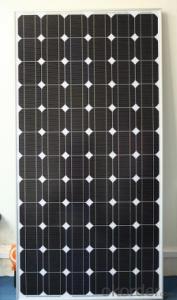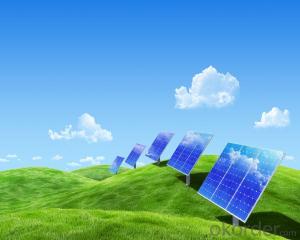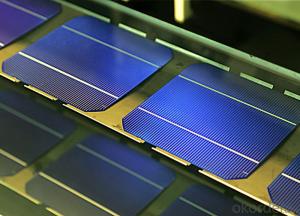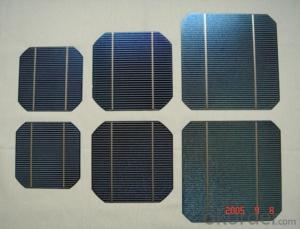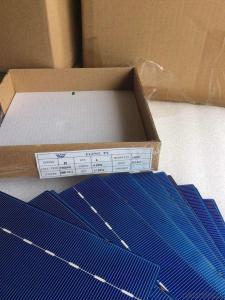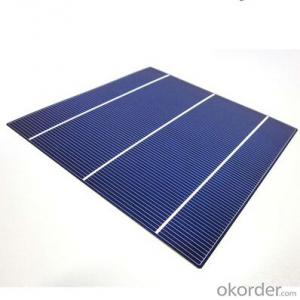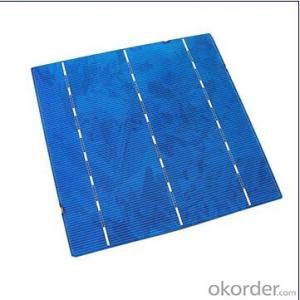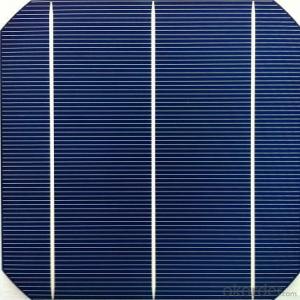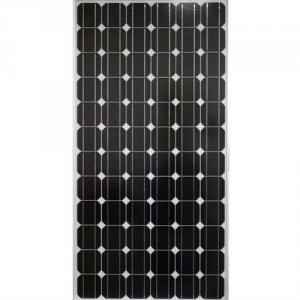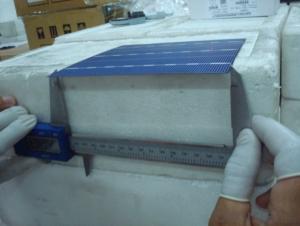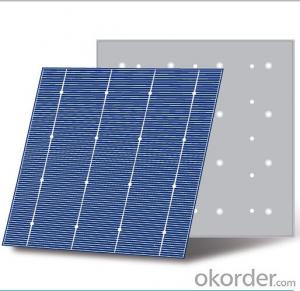C Si Solar Cells - 25 Years Life Time - 17.8% Efficiency - World-Beating Performance
- Loading Port:
- Shanghai
- Payment Terms:
- TT OR LC
- Min Order Qty:
- 1000 pc
- Supply Capability:
- 5000000 pc/month
OKorder Service Pledge
OKorder Financial Service
You Might Also Like
Brief Introduction of Solar Cells
A solar cell, is an electrical device that converts the energy of light directly into electricity by the photovoltaic effect, which is a physical and chemical phenomenon. It is a form of photoelectric cell, defined as a device whose electrical characteristics, such as current, voltage, or resistance, vary when exposed to light. Solar cells are the building blocks of photovoltaic modules, otherwise known as solar panels.
Introduction of our Company
We are a producer of bifacial photovoltaic (PV) crystalline silicon solar cells that provide 25% and beyond more electricity per cell at a standard cell production cost, lowering the LCOE, doubling the PV project IRR and cutting its payback time.
Our bifacial cell delivers industry leading equivalent cell efficiency with over 21% today and a target of over 24% in the near future. Our cell is the best solution for flat rooftop and ground installations, as well as for PV trackers, sound barriers, car ports, facades and some forms of BIPV.
Our manufactures its bifacial high-performance, high-quality, mono c-si cells in its 30 MWp/year plant in Heilbronn, Germany and is on track with a four-year target of reaching a bifacial cell production capacity of 500 MW/year worldwide.
The PV market has turned into a commodity market where most vendors offer similar products without differentiation. Cell efficiencies are reaching a ceiling and current players are only able to offer marginal improvements through higher production costs. Our bifacial cell offers a disruptive solution targeted at the mainstream of the PV value chain; p-type, 6’’ silicon cells, with an unprecedented combination of high efficiency and low production cost.
Specifications of Polycrystalline Solar Cells
Format: 156 mm × 156 mm ± 0.5 mm
Thickness: 210 μm ±40 μm
Front (-) : 1.5mm bus bars (silver),blue anti-reflection coating (silicon nitride)
Back (+) : 2.5mm wide soldering pads (silver) back surface field (aluminium)
Efficiency (%) | Pmpp (W) | Umpp (V) | Impp (A) | Voc (V) | Isc (A) |
18.00% | 4.38 | 0.528 | 8.291 | 0.631 | 8.869 |
17.80% | 4.33 | 0.525 | 8.252 | 0.629 | 8.821 |
17.60% | 4.29 | 0.532 | 8.053 | 0.633 | 8.541 |
17.40% | 4.23 | 0.528 | 8.092 | 0.624 | 8.632 |
17.20% | 4.19 | 0.524 | 7.992 | 0.62 | 8.458 |
17.00% | 4.14 | 0.52 | 7.972 | 0.623 | 8.5 |
Advantage of Polycrystalline Solar Cells
1. Tire-1 Solar Cells’ Manufacturer Quality Guarantee. With a complete and sophisticated quality government system, our Quality Management have arrived world’s leading place. Customer can receive Tire-1 Cells Maker’s Quality Standard Products.
2. Trusted Warranty. We can supply trusted after-sales service to our customer. If our cells are found not in conformity to the specification of manufacturer, or should the inspected quantity found in shortage, or should the packing found damaged, the buyer has the right to claim to the seller. The claim, if any, should be presented to seller within 30 days after cargo's arrival date to the port, together with related inspection report and photos issued and provided by a reputable independent surveyor such as SGS.
3. World’s Leading Manufacturer Equipment. We imported the newest and leading production equipment from abroad. Advanced equipment can guarantee the stable quality of cells. Auto production line can also save labor cost which will further cut our production cost.
4. Bulk supply: With the production capacity of 500MW, we can produce large quantity every month. This can satisfy most customer requirement.
Usage of Polycrystalline Solar Cells
Solar cells are often electrically connected and encapsulated as a module. Photovoltaic modules often have a sheet of glass on the front (sun up) side, allowing light to pass while protecting the semiconductor wafers from abrasion and impact due to wind-driven debris, rain, hail, etc. Solar cells are also usually connected in series in modules, creating an additive voltage. Connecting cells in parallel will yield a higher current; our solar cells have passed IEC Certification. With high and stable quality, our cells can greatly improve the performance of Solar Modules.
Applications of Polycrystalline Solar Cells
Assemblies of photovoltaic cells are used to make solar modules which generate electrical power from sunlight, as distinguished from a "solar module" or "solar panel". A solar array generates solar power using solar energy.
Packaging & Delivery of Polycrystalline Solar Cells
Carton Box Package and Deliver by air. It should be noticed that it should be avoid of water, sunshine and moist.
Factory Picture of Solar Cells
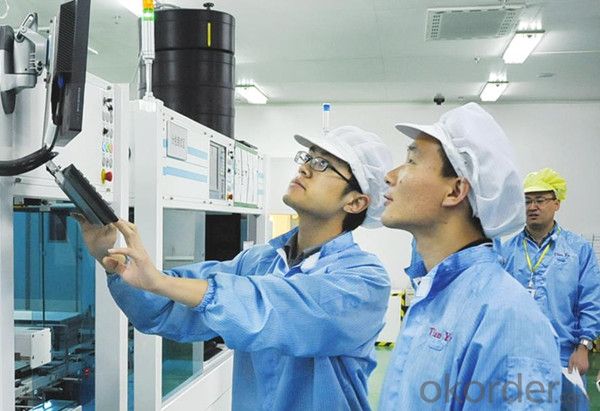
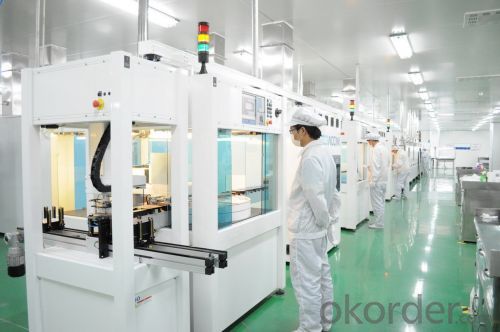
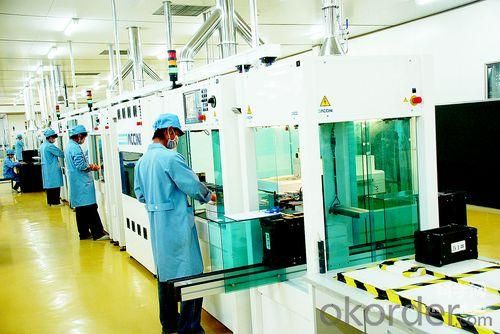
FAQ
We have organized several common questions for our clients,may help you sincerely:
1. What’s price per watt?
A: It’s depends on the quantity, delivery date and payment terms of the order. We can talk further about the detail price issue. Our products is high quality with lower price level.
2. Can you tell me the parameter of your solar cells?
We have different series of cells with different power output, both from c-si to a-si. Please take our specification sheet for your reference.
3. How do you pack your products?
We have rich experience on how to pack the panels to make sure the safety on shipment when it arrives at the destination.
4. Can you do OEM for us?
Yes, we can.
5. How long can we receive the product after purchase?
In the purchase of product within three working days, We will arrange the factory delivery as soon as possible. The perfect time of receiving is related to the state and position of customers. Commonly 7 to 10 working days can be served.
- Q: What is the role of solar cells in reducing carbon emissions?
- Solar cells play a crucial role in reducing carbon emissions by harnessing the power of sunlight to generate clean and renewable electricity. By converting solar energy into electricity, solar cells eliminate the need for fossil fuel combustion, which is a major source of carbon emissions. This sustainable energy source helps to reduce our reliance on carbon-intensive power generation methods, thus mitigating the greenhouse gas emissions responsible for climate change.
- Q: How about the current market price for the film solar?
- Just for your reference, we are a film solar supplier based in US, and the price for the film solar is around USD 20 each.
- Q: Can solar cells be used in agriculture for irrigation?
- Yes, solar cells can be used in agriculture for irrigation. Solar-powered irrigation systems can efficiently harness solar energy to pump water from wells, rivers, or other sources, reducing the dependency on fossil fuels and electricity. This sustainable solution can help farmers irrigate their fields and crops, especially in remote areas with limited access to electricity grids.
- Q: What is the solar cells market in China?
- Solar cells, is the "ideal" energy of human being's life, solar energy has changed the traditional way of obtaining energy by battery technology. But this technology is limited due to what solar cells needs to work- the weather factors, the solar energy battery can not work properly under rainy or cloudy weather. Therefore, solar cells market is not very well developed in some part of China where there are not much sun.
- Q: Can solar cells be integrated into building materials?
- Yes, solar cells can be integrated into building materials. This is known as building-integrated photovoltaics (BIPV) and involves embedding solar cells into various components of a building, such as roofs, windows, or walls, to generate electricity. BIPV offers a dual purpose by combining the functionality of traditional building materials with renewable energy generation.
- Q: Is it possible to learn how to make solar cells by yourself?
- Are you good at doing experiments? If you are, try it as many times as you can, then you will be finally be an expert!
- Q: Want to use solar panels and batteries to produce a power supply that can provide a stable voltage, how can you connect? Can you connect directly with the solar panel to the battery while the battery power supply is feasible?
- Solar cells and battery connection, it is best to use a photovoltaic charging controller, which can control the output voltage of solar cells can protect the battery is not overcharge, but also at night when the solar cell does not generate electricity, to prevent the battery power back
- Q: What is the impact of bird collisions on solar cell performance?
- Bird collisions can have a negative impact on solar cell performance as they can damage or break the surface of the solar panels. This can lead to a decrease in efficiency and overall energy production of the solar system. Additionally, bird droppings and debris from collisions can also create shading, reducing the amount of sunlight reaching the panels and further affecting their performance.
- Q: Can solar cells be used in space exploration?
- Yes, solar cells can be used in space exploration. Solar cells are commonly utilized in space missions to generate electrical power from sunlight, as they are an efficient and reliable source of energy in the vacuum environment of space. They have been employed in various spacecraft and satellites to power systems and instruments, including communication devices, scientific instruments, and propulsion systems. Solar cells are essential for prolonged missions in space, as they provide a sustainable and renewable source of energy.
- Q: What is the role of charge controllers in solar cell systems?
- The role of charge controllers in solar cell systems is to regulate and optimize the charging process of the batteries connected to the solar panels. They monitor the voltage and current levels from the panels and ensure that the batteries are charged efficiently and safely. Charge controllers also protect the batteries from overcharging, over-discharging, and other potential damage, ultimately extending their lifespan.
Send your message to us
C Si Solar Cells - 25 Years Life Time - 17.8% Efficiency - World-Beating Performance
- Loading Port:
- Shanghai
- Payment Terms:
- TT OR LC
- Min Order Qty:
- 1000 pc
- Supply Capability:
- 5000000 pc/month
OKorder Service Pledge
OKorder Financial Service
Similar products
Hot products
Hot Searches
Related keywords
